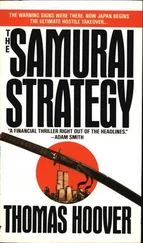Thomas Hoover - Project Daedalus
Здесь есть возможность читать онлайн «Thomas Hoover - Project Daedalus» весь текст электронной книги совершенно бесплатно (целиком полную версию без сокращений). В некоторых случаях можно слушать аудио, скачать через торрент в формате fb2 и присутствует краткое содержание. Жанр: Триллер, на английском языке. Описание произведения, (предисловие) а так же отзывы посетителей доступны на портале библиотеки ЛибКат.
- Название:Project Daedalus
- Автор:
- Жанр:
- Год:неизвестен
- ISBN:нет данных
- Рейтинг книги:5 / 5. Голосов: 1
-
Избранное:Добавить в избранное
- Отзывы:
-
Ваша оценка:
- 100
- 1
- 2
- 3
- 4
- 5
Project Daedalus: краткое содержание, описание и аннотация
Предлагаем к чтению аннотацию, описание, краткое содержание или предисловие (зависит от того, что написал сам автор книги «Project Daedalus»). Если вы не нашли необходимую информацию о книге — напишите в комментариях, мы постараемся отыскать её.
Project Daedalus — читать онлайн бесплатно полную книгу (весь текст) целиком
Ниже представлен текст книги, разбитый по страницам. Система сохранения места последней прочитанной страницы, позволяет с удобством читать онлайн бесплатно книгу «Project Daedalus», без необходимости каждый раз заново искать на чём Вы остановились. Поставьте закладку, и сможете в любой момент перейти на страницу, на которой закончили чтение.
Интервал:
Закладка:
The line, a high-security satellite link connecting the Hokkaido facility to the Mino Industries Building in the Ueno section of Tokyo, had gone dead. Tanzan Mino, CEO of Mino Industries Group, had other matters to concern himself with.
Taro Ikeda repressed a tremble. The technical part, the project here on Hokkaido, was going well; what was happening on the Tokyo end? First the delay of the funds, and now a rumored breach of security. KGB had intercepted the protocol. That was the word from his informant close to the CEO in Tokyo.
Shigata ga nai, he thought; sometimes things can't be helped.
Taro Ikeda was proud he had been personally selected by the CEO to be project director for the top secret Hokkaido operation. He was fifty-four years of age, a graduate of Tokyo University Law School, a twenty-five-year veteran, now retired, of MITI, the Ministry of International Trade and Industry. He was, in short, a mover in the New Japan and he looked it-elegantly graying temples, tailored silk suits, a small mustache to set off his high cheeks. At one time he had been the inside choice for MITI vice minister, before the CEO offered him a chance to fulfill a vision no official source in the ministry could ever admit existed.
Overall, he told himself, the CEO should be pleased. He had carried out his own responsibilities flawlessly. And MITl was providing an unofficial umbrella of technical support, covering any unexpected requirements. Through this project the CEO had set into motion a plan that would soon alter dramatically Japan's place in the equation of world power.
Bushido, the Way of the Warrior. The element of surprise. No one outside Mino Industries knew what was really planned, not even the prime contractors for the project. Security every step of the way. And now the drama was ready, the curtain poised. Only a few more days, and a technological miracle would soar upward from the earth, symbolizing the first step in the realization of Japan's age-old ambition. The world would know the twenty-first century had arrived, the Japanese century. Mino Industries had made it possible.
The CEO's sense of timing was impeccable. Only last week he had approved Taro Ikeda's final briefing to Noburu Takahashi, executive director of the National Space Development Agency. NASDA, through contracts to the Space Systems Division of Mitsubishi Heavy Industries, was in charge of the major hardware of the Japanese rocket program. Takahashi was also an executive of the new Daedalus Corporation, an unofficial "consultant."
Together they had traveled to the agency's space center on Tanegeshima, the island six hundred miles south of Tokyo, to monitor the shakedown launch of Japan's new H-2 rocket series. Although that vehicle was far superior to both the American Titan 34D and the European Ariane 4, it was a technological dinosaur compared to this project. This was unlike anything the world had ever seen.
The project had begun over two years earlier, when he was still director of MITI's Kokuki Buki-ka, the Aircraft and Ordnance Section. An "anonymous" scenario-conceived by the CEO of Mino Industries Group, Tanzan Mino-had arrived on his desk, detailing a revolutionary proposal. Every director in MITI had received a copy.
The eventual "consensus"? It was too visionary, would aggravate Japan's already delicate relationship with America. The Liberal Democratic Party could never be seen to embrace such a project publicly.
Accordingly, MITI's parliamentary vice minister turned it down. Officially. But that was merely tatame, his "public face." Afterward the classified moves, the real moves, began. Perhaps, it was hinted, if the idea were "explored" outside regular government channels… Top-secret feelers were sent to the Soviets.
With a green light, Tanzan Mino had immediately created the Daedalus Corporation, hiring away Taro Ikeda and forty-seven of his MITI aerospace engineers, the best and brightest, from Kokuki Buki-ka. Start-up financing had been provided by the CEO personally, with some matching contributions by the top executives of Japan's major zaibatsu, industrial groups. The scenario was an easy sell, since they all realized its payoff would be staggering. The only requirement was that it remain top secret until the appropriate moment, when the Diet would be formally notified. By that time, however, there would be no turning back. Everything would have to go forward as a package.
Under the CEO's direction, Taro Ikeda and his forty- seven MITI engineers had relocated here on Hokkaido to oversee a secret, fast-track project. Forty-seven. Perhaps, he sometimes mused, that number was no coincidence. Perhaps it was an unconscious act of historical resonance. Forty-seven brilliant young technicians, just like the forty-seven ronin, the samurai of the famous legend. Those ronin had bided their time for many years, living in obscurity and ignominy until the moment when they rose up in triumph.
Bushido. You must always make your opponent do battle on your own terms. And today money and technology were Japan's most powerful weapons. Why not use them strategically, the CEO had argued. The time had come to engage other unsuspecting nations with concentrated strength, in a forcible move to achieve Japan's long-term objectives. The Way of the Warrior.
Taro Ikeda surveyed his office, his personal command center. The space was appointed like the headquarters of a field marshall: a deep metallic gray with video screens along one wall permitting him continuously to monitor activities in every sector of the facility. And across the top of his black slate desk was marshalled a line of gray telephones with scramblers, each a secure direct line to the offices of one of the project's prime contractors.
The first was to Nagoya, to the head office of Mitsubishi Heavy Industries. Theirs was the initial contract let by the CEO after the project financing was in place. Indeed, Mitsubishi's Nagoya Aircraft Works was the ideal choice to manufacture the air-breathing turboramjets-scramjets for the vehicle. That conglomerate had produced over fifty thousand aircraft engines during the great Pacific war, and, more recently, their new Komaki North plant was responsible for the powerful oxygen-hydrogen engines that composed the first stage of the giant H-2 booster. The phone on his desk connected him directly to the office of Yoshio Matsunami, Mitsubishi's general manager for space systems. The massive scramjets for this project had been manufactured in Nagoya under a veil of total secrecy, then static-tested at their aeropropulsion test facility and individually shipped here to Hokkaido in unmarked railcars.
Another line connected him to the head office of Nissan's aeronautical and space division in Tokyo, already in charge of all solid rocket boosters for the Japan Institute of Space and Aeronautical Science. The CEO had hired their senior propulsion engineers to resolve problems connected with air-breathing combustion of liquid hydrogen.
The third connection was to Hitachi City, sixty miles from Tokyo. Hitachi, Limited manufactured the booster cases for the new H-2 vehicle, and their extensive experience with composite alloys at high-temperatures made them the obvious choice to create the hypersonic airframe.
There were other lines as well. The vehicle's inertial- guidance system and flight controls-both based on advanced Soviet designs-had been produced at Japan's National Aerospace Laboratory. Preliminary wind-tunnel tests had been assigned to the Kakuda Propulsion Center, whose rocket-engine development facilities were already being used to support NASDA's program in oxygen-hydrogen thruster R amp;D.
The last high-security line connected him directly to Tsukuba Space Center at Tsukuba Science City, forty miles from Tokyo, the nerve center for all Japanese manned space-flight research. Their clean-rooms and deep-space tracking facilities were comparable to any in the world, and their Fujitsu SX-10 supercomputer-which, with 128 processors for parallel processing, performed nine billion calculations per second-could provide realtime simulation of a complete hypersonic flight profile.
Читать дальшеИнтервал:
Закладка:
Похожие книги на «Project Daedalus»
Представляем Вашему вниманию похожие книги на «Project Daedalus» списком для выбора. Мы отобрали схожую по названию и смыслу литературу в надежде предоставить читателям больше вариантов отыскать новые, интересные, ещё непрочитанные произведения.
Обсуждение, отзывы о книге «Project Daedalus» и просто собственные мнения читателей. Оставьте ваши комментарии, напишите, что Вы думаете о произведении, его смысле или главных героях. Укажите что конкретно понравилось, а что нет, и почему Вы так считаете.












